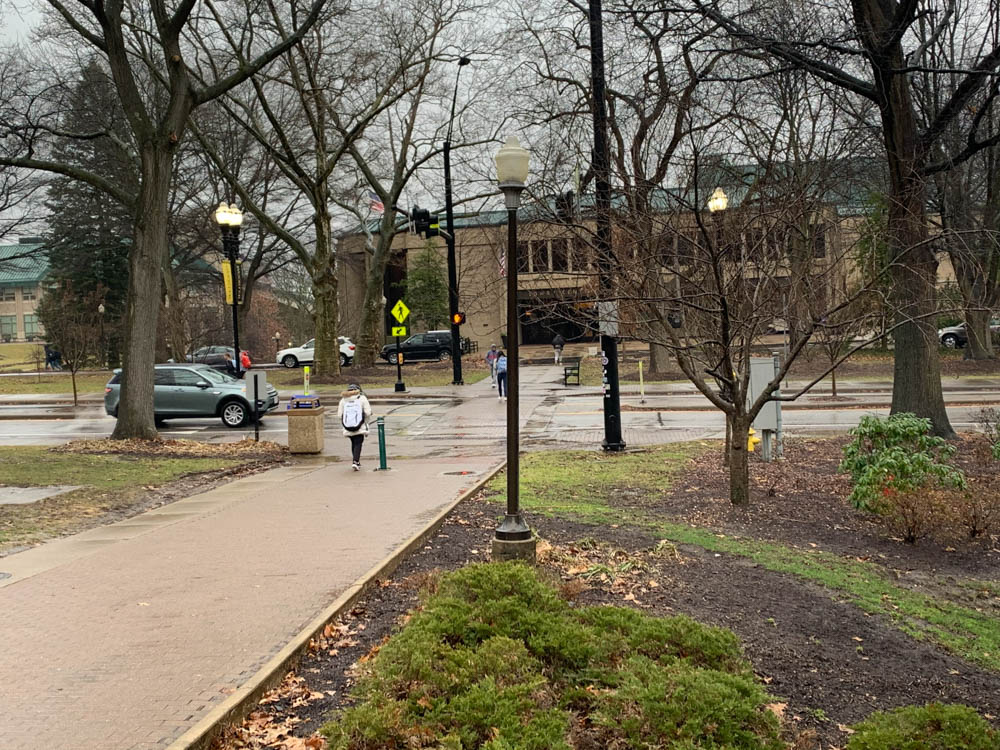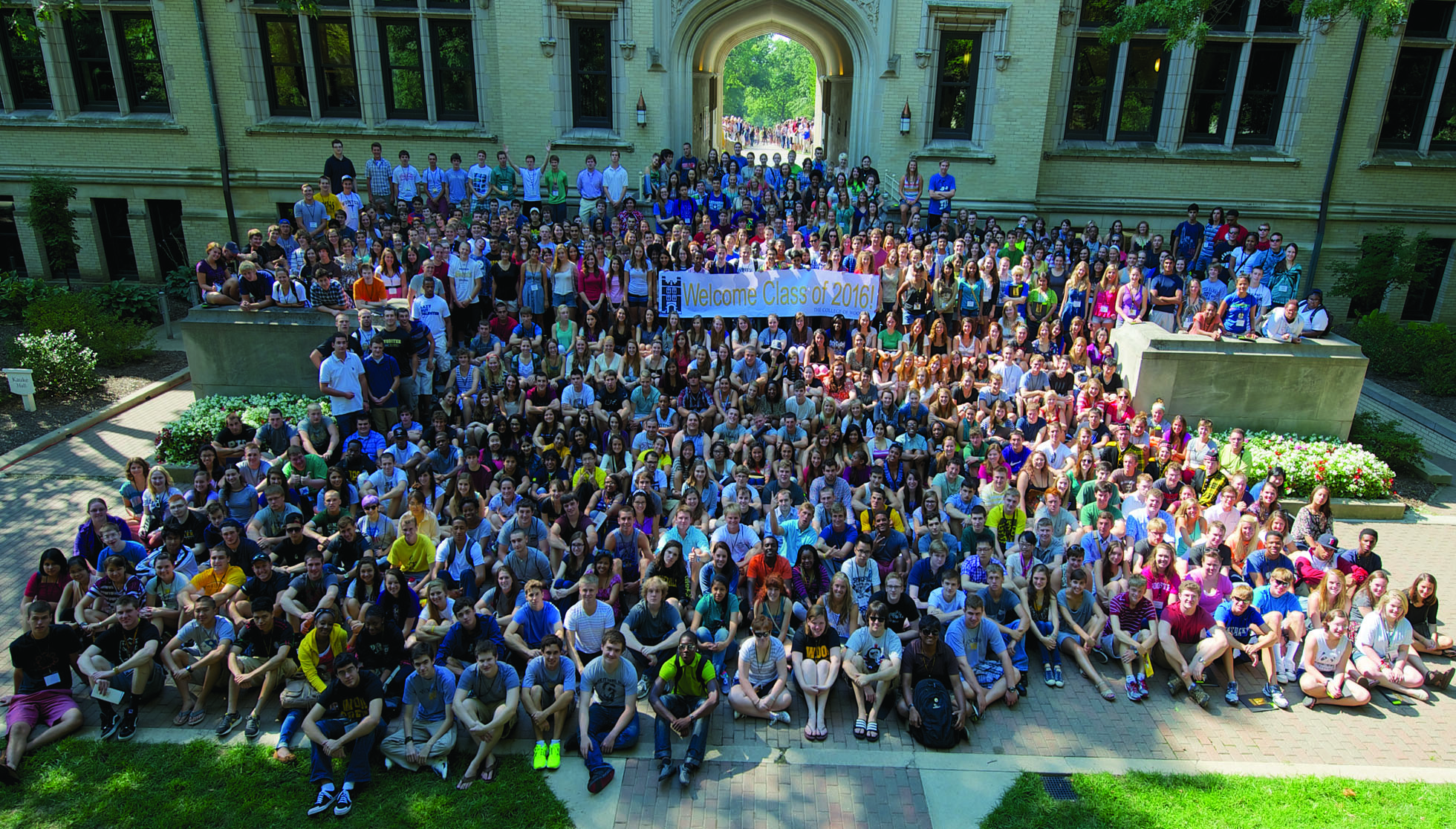
Olivia Proe
Features Editor
Beall Avenue acts as the main thoroughfare of The College of Wooster campus, but it has also long been an intersection between the lives of students and city residents. Hateful comments, harassment and sometimes acts of violence towards students along Beall have highlighted Wooster’s fraught “town and gown” relationship. Rooted in power dynamics not easily examined or unpacked in one article, there is no clear, agreeable solution on how to both improve the relationship between the City and College of Wooster while making the campus safe for marginalized students. However, some figures on campus have already begun to do the difficult work to both make Beall safe for students and better connect the campus to the City.
One of the most prominent initiatives to create connections between the College and the City of Wooster is“Bridging Beall,” a collection of service projects created in 2018 by the Center for Diversity and Inclusion (CDI) and local community organizations. CDI housed the funding from a grant to create the program, but the planning team was comprised of four faculty members and five members from the City of Wooster’s community. The program looked specifically at the political divide between the City and the College in its first year. In its second year, “Bridging Beall” focused on homelessness in the local community.
“The goal of the program was to create opportunities for discussions across points of difference in the campus and community,” said Nate Addington, director of Experiential Learning and Community Engagement. “Ultimately, we wanted to show that there is much more that unites us than that divides us and to create relationships within the campus and community.”
Addington feels that the goals of the program were met by both objective and subjective measures. “All participants completed a survey before and after participation in the program and we saw very clear trends in the data that showed that barriers were being broken down and that systematic ‘othering’ was being reduced,” he noted. Outside of survey data, Addington also observed that the program had created interpersonal relationships. “I know that several members of the program are still in touch with members of their small groups and that real friendships have been formed,” he said.
People to People Ministries, a City of Wooster non-profit whose goal is “to provide an immediate, realistic and compassionate response to people with … basic needs when these needs are not being met through any other programs,” partnered with CDI in the “Bridging Beall” initiative. People to People’s director Joe Szeker also felt that the initiative had positive effects on the relationship between City and the Campus. “I think the students got a good feel for the scope of the need in our city and found similarity with the places they grew up,” he said. Even though there still may be misunderstandings, Szeker believes that the initiative helped students and city residents find common ground. “I think one thing became clear for all of us as we talked at the conclusion of the event: that poverty and its effect on people in it are the same no matter where you are from, and I sensed in many that they gained a better understanding of the need in our city, and again, some could relate to it,” he commented.
Halen Gifford ’21, chair of Campus Council (CC), also participated in “Bridging Beall” and saw its positive effects from the student perspective. She felt that residents of the City of Wooster learned just as much about The College and its students throughout the service projects. “In my group, none of the community members knew that the College of Wooster has students that attend who are from low- income backgrounds. Learning this really surprised people and I think changed their outlook on the College even if they already thought positively about us,” she said.
In terms of safety for students along Beall Avenue, Director of Security and Protective Services (SPS) Steve Glick acknowledges that there are still general concerns about the use of racial slurs, traffic and lighting along Beall. However, he has seen some improvement in these issues thanks to College and City initiatives. “Based on the number of reports, the incidents have seemed to decline,” he said. “We have seen an uptick on pedestrians getting hit while crossing — almost every one has been after dark — which is why the College improved the lighting. Kudos to Facilities for working with the City and getting it done,” he said.
In terms of further initiatives, Glick spoke to a few plans that SPS has to improve student safety. “We have had some preliminary conversations with the City about changing some signage, maybe add some additional pavement markings; and we are adding additional cameras along Beall as well. Our patrol officers are reminded about being visible along Beall Ave., whenever they have the time.”
However, Wooster students still feel that there is much work to be done in terms of student safety. Annays Yacamán ’21, vice chair of CC, addressed concerns around student safety on Beall. “I have been yelled at several times while walking down Beall, either being catcalled or … with derogatory words. I am from the inner city of Chicago, and despite people’s perceptions of it, I have felt far less safe walking down Beall,” she commented. “I think there is a shared understand- ing amongst students of color and other marginalized people to avoid walking on Beall at all costs, even if it means being inconvenienced several minutes.” Though the College approved funds for additional cameras on campus, Yacamán does not feel that SPS has taken adequate measures to ameliorate student safety. “As far as I know, there haven’t been any new preventative measures for student safety on Beall — only reactive measures, such as stressing us to report incidents,” she said.
Moreover, the process of reporting incidents of harassment is still cumbersome. According to Yacamán, “I personally am not sure what constitutes being reported. I also doubt students want to be bombarded with having to follow up with a report and talk to a bunch of people, only to be told nothing can be done.” Gifford echoed Yacamán’s sentiment that students lack power in decision-making around safety. “Campus Council really doesn’t have any power in that area. We have worked with Security to identify areas they could improve. But again, we don’t have any actual power to make those changes. The best I can do is act as an advocate for student needs when they come up,” she said.
Still, members of both the College and City are continuing to create inroads and have positive outlooks on the future for the relationship between city and campus. Addington feels that the College is working towards building a sense of solidarity with the City of Wooster. “If we have a problem with equity on campus, then so does the town … creating that culture of solidarity isn’t something that will happen overnight, but programs like ‘Bridging Beall’ service houses, the community-based AMRE [Applied Methods and Research Experience] projects, the health coaches and so many more are helping to break down walls that have been built up over time,” he said.
Addington further expresses optimism about College initiatives underway that will continue creating this solidarity. In addition to hopes of bringing “Bridging Beall” back next year, the office of Experiential Learning and Community Engagement is working to engage community partners more with service houses. Finally, he commends student efforts to improve relationships with the city through Wooster’s newly re-chartered NAACP chapter and programs such as the Soft Power Project and Soup & Bread.
Szeker agrees that continued interest and energy from students will further create connections and improve the relationship between the City and College. “The students themselves have become the catalyst that will continue to help improve the relationship between the students, the College and the community for years to come,” he commented. By “infus[ing] organizations like ours with young people to help us (which we greatly need) … we can help students learn more about poverty and themselves.”
Gifford also encourages students to continue building a culture of solidarity with the town. “What I think is important for people to remember is the majority of community members do not hate Wooster students and they do not hate the College. Those individuals who do or say hateful things to us are not representative of Wooster or Wayne County,” she said. “The hate that those people promote is part of a much larger toxic culture that is a problem all over the country. It is wrong and inexcusable, but we shouldn’t label all of Wooster.”
Ultimately, creating solidarity between the College and the City of Wooster will require many more joint community efforts. Many student safety concerns still need to be addressed in order to make Beall an accessible area for marginalized students. However, both the College and the City look forward to improving their relationship at large.
Initiatives on the horizon show promise for further connections and addressing systemic injustices that both the campus and city face. Says Addington, “Anytime we can advance the mission of our institution, while also being a good neighbor to those around us, well, that is a win-win and I’ll take that offer every time.”

